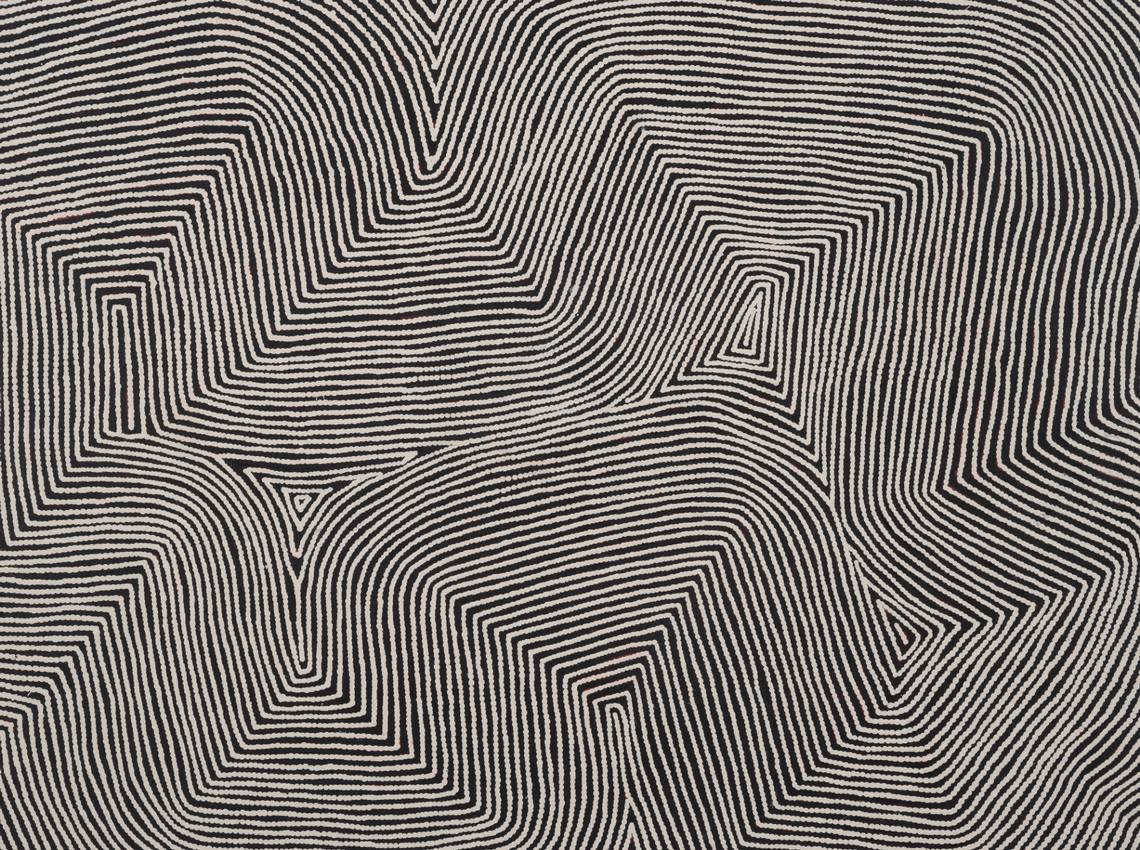Miami art collectors honored by Australian government for promoting Aboriginal art
Dennis and Debra Scholl, two prominent Miami arts leaders, were recognized by the Australian government for their efforts in promoting Aboriginal artwork.
On Friday, the Scholls were named Members of the Order of Australia, the country’s preeminent recognition for outstanding service or achievement, for their contributions in championing indigenous Australian artists by collecting, exhibiting and donating their work to art museums. The two met with Australian Ambassador to the United States Arthur Sinodinos in Washington D.C. for a ceremony to commemorate the honor.
“We were really blown away when we found out about it,” Debra said.
“We’re very honored, but honestly, the greatest honor about all of this is the time that we got to spend with these artists,” Dennis added. “They are some of the greatest artists on the face of the earth.”
The couple has been heavily involved in Miami’s arts community for decades. Debra is the chair of the board of Locust Projects, Miami’s longest-running alternative art space, and Dennis is the CEO and president of Oolite Arts, a visual artist support nonprofit.
Since the early 2000s, the Scholls have collected about 400 pieces by Aboriginal Australian artists, they said. In 2015, the couple organized three exhibitions featuring indigenous Australian art that traveled to 16 North American museums.
In 2017, the couple announced the donation of half of their Aboriginal artwork collection to three museums: the Metropolitan Museum of Art in New York; the Patricia & Phillip Frost Art Museum at Florida International University in Miami; and the Nevada Museum of Art, which is home to one of the largest public collections of Aboriginal art in the country. The donation included works by artists Paddy Bedford, Nonggirrnga Marawili, Warlimpirrnga Tjapaltjarri and Gulumbu Yunupingu. The Scholls have also produced three major catalogs on Aboriginal art and commissioned academic research from international scholars.
Aboriginal Australian art -- mankind’s longest continuous art making tradition -- deserves recognition in the contemporary art world, Dennis said. The works need to be seen in contemporary art spaces, not anthropological history exhibits, he said.
“We thought of this as a collecting project. We wanted to enjoy the work as we always do, but we felt like there was a higher purpose here,” Dennis said. “We felt like this was the moment where we might be able to help have these artists be considered in a different way.”
Before the donations and exhibitions, the Scholls had been traveling to Australia for years to make wine. During one visit, Dennis was having a meal with a friend, Australian curator Rachel Kent, when she mentioned that Australia’s best contemporary art was made by Aboriginal artists.
Dennis wasn’t familiar, so Kent recommended a trip to the Art Gallery of New South Wales, the major art museum in Sydney. The artists’ work hit him “like lightning,” he said.
“I turned the corner, and it was this epiphany moment,” Dennis said. “Oh my gosh, this is like nothing I’ve ever seen.”
Dennis went straight from the museum to the airport to catch his flight back home to Miami. When he finally got home after 30 hours of travel, he immediately told Debra the good news. They were about to go all in on contemporary Aboriginal Australian artwork.

The artists included in the Scholls’ collection use traditional motifs and techniques in their paintings and sculptures. Some artists, like Bedford, paint with thick, bold abstract lines and rich colors. Tjapaltjarri’s paintings on linens are mesmerizing repetitions of small dots or thin lines that seem to move on their own.
Though they had no prior knowledge of this type of art, the Scholls said they were fascinated by its history and cultural significance. They more they learned, the more they realized how much they didn’t know, Dennis said.
“It became so much more rewarding in terms of learning about something that we never knew and helping get the word out about how great the artists are in all these Aboriginal communities,” Debra said.
Some of their favorite memories are from their time in Yirrkala, a small remote town in Northern Australia where they spent days meeting local artists and learning about their art practices.
When asked why he felt so passionately about Aboriginal Australian art, Dennis recalled the touring art shows they did across the United States. No matter what city they were in, audiences were joyful and excited to see the works.
“The work reaches out to you in a way,” he said.
This story was produced with financial support from The Pérez Family Foundation, in partnership with Journalism Funding Partners, as part of an independent journalism fellowship program. The Miami Herald maintains full editorial control of this work.
